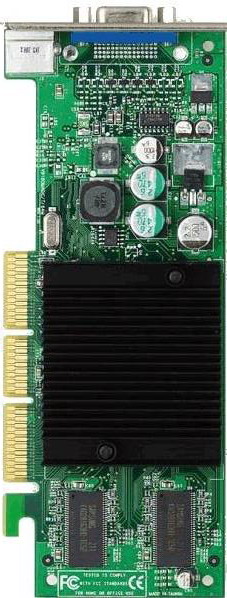The Accelerated Graphics Port (often shortened to AGP) is a high-speed point-to-point channel for attaching a video card to a computer's motherboard, primarily to assist in the acceleration of 3D computer graphics. Since 2004, AGP has been progressively phased out in favor of PCI Express. As of mid-2009, PCIe cards dominate the market, but new AGP cards and motherboards are still available for purchase, though OEM driver support is minimal.
AGP slots come in variations:
AGP 1x - 32-bit channel operating at 66 MHz. Its bandwidth is 266 MB/s, which is twice higher than original PCI's bandwidth of 133MB/s.
AGP 2x - 32-bit channel operating at the doubled bandwidth of 533 MB/s at the same 66 MHz owing to dual-way data transfers similar to DDR memory (only directed to a video card.)
AGP 4x - the same 32-bit channel at 66 MHz, but with effective frequency quadrupled to 266 MHz, maximum bandwidth exceeding 1 GB/s.
AGP 8x - additional modifications allowed achieving 2.1 GB/s bandwidth. AGP video cards require 1.5 V (older) or 3.3 V (newer) AGP slots
The graphics card voltage specification needs to match the motherboard AGP slot voltage specification, so don’t expect a 3.3 V graphics card to work in your old motherboard with 1.5 V AGP slot. Most new graphics cards have a special key that will not even let you insert the card into the wrong AGP slot.




1 comments:
good information
Post a Comment